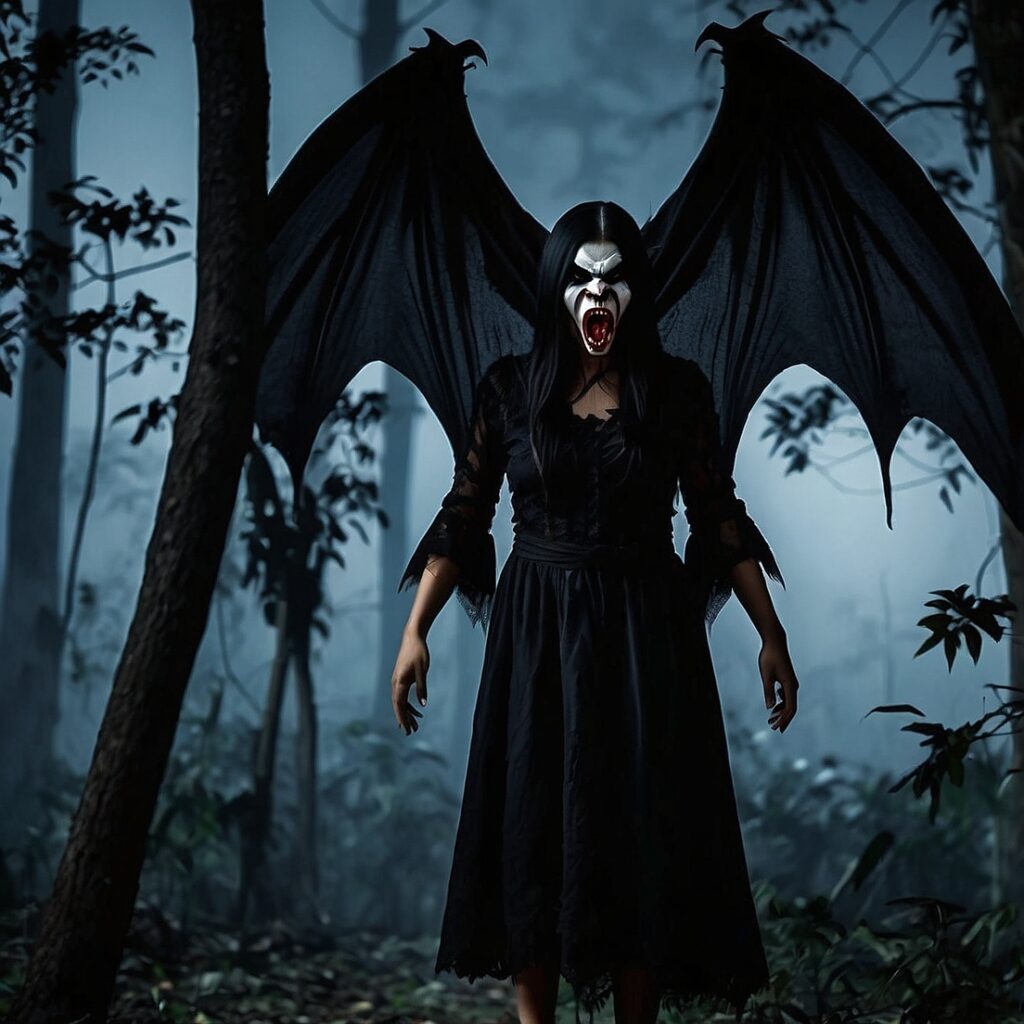In the lush, verdant landscapes of the Philippines, where ancient traditions blend seamlessly with modern life, there exists a realm of mystical beings that have captivated the imagination of Filipinos for generations. Among these ethereal entities, one stands out for its unique connection to the earth and its role in shaping the cultural landscape of the archipelago: the Nuno sa Punso. This blog delves deep into the fascinating world of these mysterious creatures, exploring their significance in Filipino folklore, their impact on cultural practices, and the enduring respect they command in contemporary Philippine society.
The Origins of Nuno sa Punso
Etymological Roots
The term “Nuno sa Punso” is derived from Tagalog, the basis of the Filipino national language. “Nuno” translates to “ancestor” or “grandfather,” while “punso” refers to a mound or anthill. Thus, the literal translation of Nuno sa Punso is “ancestor of the anthill” or “grandfather of the mound.” This nomenclature provides insight into the reverence accorded to these beings, positioning them as elder figures in the spiritual hierarchy of Filipino folklore.
Historical Context
The concept of Nuno sa Punso is deeply rooted in pre-colonial Filipino animistic beliefs. Before the arrival of Spanish colonizers in the 16th century, the indigenous peoples of the Philippines practiced a form of animism that attributed spiritual essence to natural objects and phenomena. This worldview laid the foundation for the belief in nature spirits, including the Nuno sa Punso. As the Philippines underwent centuries of cultural transformation under various colonial influences, the belief in these earth spirits persisted, evolving and adapting to changing times while retaining its core significance in Filipino culture.
Characteristics and Appearance
Physical Description
Nuno sa Punso are typically described as diminutive beings, often compared to dwarves or gnomes in Western folklore. Their appearance varies in different accounts, but common descriptions include:
- Height: Usually between 1 to 3 feet tall
- Complexion: Often portrayed with dark or earth-toned skin
- Facial features: Described as wizened, with prominent noses and sometimes long beards
- Attire: Frequently depicted wearing traditional Filipino garments or nature-inspired clothing
It’s important to note that as spiritual entities, Nuno sa Punso are believed to possess the ability to change their appearance or remain invisible to human eyes at will.
Habitat and Domain
As their name suggests, Nuno sa Punso are primarily associated with anthills, termite mounds, and small earthen protrusions. However, their domain extends beyond these specific structures to include:
- Large rocks or boulders
- Old trees, especially those with gnarled roots or hollow trunks
- Areas of undisturbed soil in gardens or forests
- Natural formations in the landscape that resemble mounds or hills
This connection to the earth underscores their role as guardians of nature and keepers of the land’s secrets.
Powers and Abilities
Supernatural Capabilities
Nuno sa Punso are believed to possess a range of supernatural abilities that reflect their status as powerful nature spirits. These powers include:
- Invisibility: The ability to remain unseen by humans unless they choose to reveal themselves
- Shape-shifting: Some accounts describe Nuno sa Punso as capable of changing their form
- Control over natural elements: Influence over plants, soil, and small animals in their domain
- Curse-casting: The power to bring misfortune or illness to those who disrespect them
- Blessing-bestowing: The ability to grant favors or good fortune to those who show proper respect
Interaction with Humans
The relationship between Nuno sa Punso and humans is complex and multifaceted. While generally benign, these spirits are known for their quick temper when offended. Interactions can range from beneficial to harmful, depending on how humans approach and treat them.
| Type of Interaction | Possible Outcomes |
|---|---|
| Respectful behavior | Blessings, good luck, protection |
| Accidental offense | Minor misfortunes, temporary illness |
| Intentional disrespect | Serious curses, long-term ailments |
| Offerings and appeasement | Lifting of curses, granting of wishes |
Cultural Significance and Practices
Role in Filipino Folklore
Nuno sa Punso occupy a significant place in the pantheon of Filipino mythological creatures. Their presence in folklore serves several important functions:
- Environmental stewardship: Encouraging respect for nature and the land
- Social cohesion: Reinforcing cultural values and norms through shared beliefs
- Moral instruction: Teaching the importance of respect, humility, and proper behavior
- Explanation of natural phenomena: Providing traditional explanations for unexplained events or illnesses
Traditional Practices and Beliefs
The belief in Nuno sa Punso has given rise to a number of cultural practices and traditions that continue to be observed in many parts of the Philippines:
Tabi-tabi po
One of the most well-known practices associated with Nuno sa Punso is the utterance of “tabi-tabi po” (excuse me) when passing by areas believed to be inhabited by these spirits. This phrase is a polite way of asking permission to pass and shows respect for the unseen inhabitants of the land.
Offerings and Appeasement
In cases where offense is believed to have been given, or to maintain good relations with the Nuno sa Punso, offerings are often made. These can include:
- Small portions of food, particularly sweet treats
- Tobacco or cigarettes
- Small coins or trinkets
- Candles or incense
These offerings are typically left near anthills or other locations associated with the Nuno sa Punso.
Avoidance Behaviors
Certain actions are traditionally avoided to prevent offending the Nuno sa Punso:
- Disturbing anthills or mounds
- Urinating or defecating near suspected Nuno habitats
- Making loud noises or causing disturbances in areas believed to be their domains
- Cutting down old trees without proper ritual observances
Impact on Modern Philippine Society
Persistence of Beliefs
Despite the modernization and urbanization of the Philippines, belief in Nuno sa Punso and other folkloric entities remains surprisingly prevalent.
Influence on Urban Planning and Development
The enduring belief in Nuno sa Punso has had tangible effects on modern Philippine society, particularly in urban planning and development:
- Preservation of green spaces: Some urban areas maintain small patches of undeveloped land out of respect for potential Nuno habitats.
- Construction practices: Some developers incorporate traditional rituals or offerings before breaking ground on new projects.
- Architectural considerations: In some cases, designs may be altered to avoid disturbing areas believed to be inhabited by Nuno sa Punso.
Cultural Tourism and Education
The folklore surrounding Nuno sa Punso has become an asset in promoting cultural tourism and education:
- Folklore tours: Many regions offer guided tours that highlight local myths and legends, including those of the Nuno sa Punso.
- Educational programs: Schools often include lessons on Filipino folklore as part of cultural heritage education.
- Cultural festivals: Some communities organize events celebrating traditional beliefs, featuring Nuno sa Punso among other folkloric elements.
Scientific Perspectives and Rationalization
Anthropological Insights
Anthropologists studying Filipino folklore have proposed several theories to explain the widespread belief in Nuno sa Punso:
- Environmental adaptation: The belief may have originated as a way to discourage disturbance of termite mounds, which play important ecological roles.
- Social control mechanism: The concept of watchful nature spirits may have helped reinforce societal norms and behaviors.
- Psychological coping: Belief in benevolent or neutral spirits may have provided comfort in dealing with the uncertainties of the natural world.
Medical Interpretations
Some medical professionals have attempted to rationalize the effects attributed to Nuno sa Punso curses:
| Reported Symptom | Possible Medical Explanation |
|---|---|
| Sudden illnesses | Exposure to pathogens in soil or vegetation |
| Skin rashes or irritations | Contact with irritant plants or insects |
| Unexplained pains | Psychosomatic responses to stress or guilt |
| Persistent ailments | Untreated underlying medical conditions |
While these explanations provide a scientific perspective, they do not diminish the cultural significance of the beliefs surrounding Nuno sa Punso.
Conservation and Environmental Connections
Ecological Benefits of Belief
The respect accorded to Nuno sa Punso and their habitats has inadvertently contributed to environmental conservation efforts:
- Preservation of biodiversity: Areas believed to be inhabited by Nuno sa Punso often remain undisturbed, serving as micro-habitats for various species.
- Soil health: The protection of anthills and mounds helps maintain healthy soil ecosystems.
- Water conservation: Respected areas often include natural water sources, contributing to local water table preservation.
Integration with Modern Conservation Efforts
Some environmental organizations in the Philippines have recognized the potential of leveraging traditional beliefs to promote conservation:
- Educational campaigns that link respect for Nuno sa Punso with broader environmental protection messages
- Community-based conservation projects that incorporate local folklore into their strategies
- Eco-tourism initiatives that combine cultural heritage preservation with environmental protection
Global Parallels and Unique Aspects
Similar Beliefs in Other Cultures
The concept of Nuno sa Punso shares similarities with beliefs found in other cultures around the world:
- European gnomes and dwarves: Often associated with the earth and nature
- Native American nature spirits: Believed to inhabit natural features of the landscape
- Japanese Kami: Spirits associated with natural phenomena and locations
Unique Filipino Characteristics
Despite these parallels, Nuno sa Punso remain distinctly Filipino in several aspects:
- Specific association with anthills and mounds
- Integration with Catholic beliefs in some regions, reflecting the syncretic nature of Filipino spirituality
- Continued relevance in urban settings, adapting to modernization
The Enduring Legacy of Nuno sa Punso
The belief in Nuno sa Punso represents a fascinating aspect of Filipino cultural heritage that has managed to survive and adapt through centuries of change. From pre-colonial animistic roots to its current place in modern Philippine society, the concept of these earth spirits continues to influence behavior, shape landscapes, and inspire respect for the natural world.
As the Philippines continues to navigate the challenges of rapid development and globalization, the enduring presence of Nuno sa Punso in the collective consciousness serves as a poignant reminder of the importance of maintaining connections to cultural roots and the natural environment. Whether viewed through the lens of folklore, anthropology, or environmental conservation, the Nuno sa Punso remain an integral part of the rich tapestry of Filipino culture, bridging the past and present while offering valuable lessons for the future.
In a world increasingly dominated by technology and urban sprawl, the quiet whisper of “tabi-tabi po” continues to echo through the Philippine landscape, a testament to the enduring power of tradition and the deep-seated human need to find meaning and connection in the world around us.
Disclaimer: This blog post is based on folklore, cultural beliefs, and available research. While efforts have been made to present accurate information, beliefs and practices may vary across different regions of the Philippines. Readers are encouraged to approach the topic with respect for cultural diversity and to conduct further research for the most up-to-date and region-specific information. If you notice any inaccuracies in this article, please report them so we can promptly make corrections.




